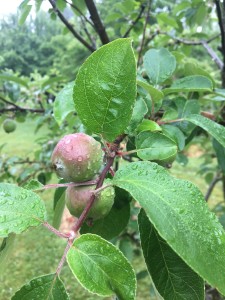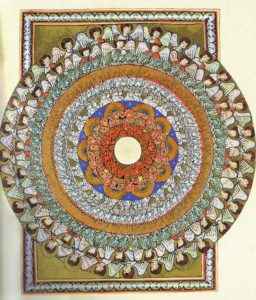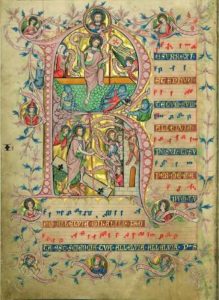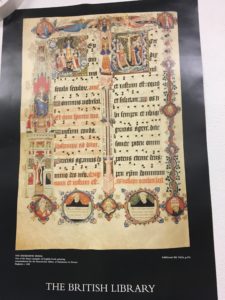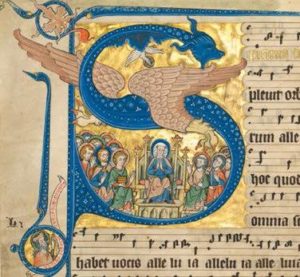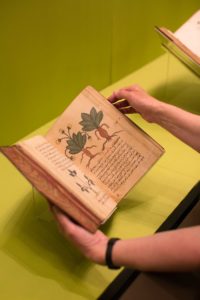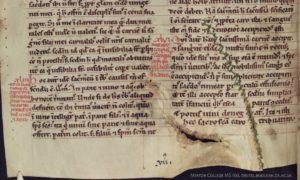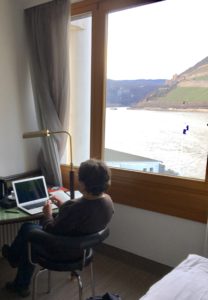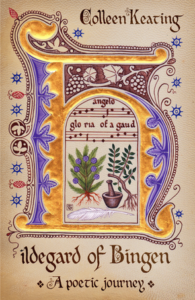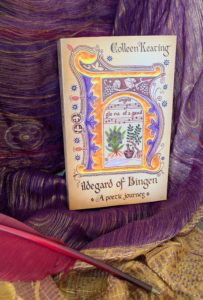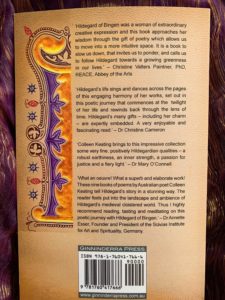
Hildegard puts us in touch with ecology and a sense of wonder.
Her visionary theology is both grand and utterly intimate,
writes Colleen Keating.
Colleen Keating has recently published a new book of poetry, Hildegard of Bingen: A Poetic Journey, which tells Hildegard’s story in 100 poems.
“Committing to ecological conversion” stands as one of the four areas of the Sisters of the Good Samaritan Statement of Directions. This collection of poetry explores Hildegard’s notion of viriditas – the greening – and the call to discover the interconnectedness of all life.
Below is an extract from her book.
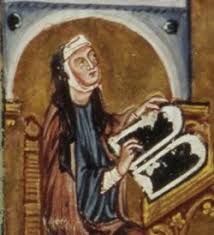
It is around 1153.
Hildegard sits in the scriptorium with her scribe the monk Volmar and Sister Clara.
Fiery Light of Writing
A Cosmic web of Creation
wings into Hildegard’s mind
her hand covers her heart
to cradle its ache for expression.
She breathes into the light.
All one,
sing the leaves of the trees outside
a choir of hosannas tremble along branches
their tracery gilded, fiery-gold against the sky.
All one
whirs each drop of water in the Nahr
as it gurgles along
to become one with the Rhine.
Eyes to the heavens,
Hildegard looks into the heart of light,
dictates to Volmar and Clara.
At times she steeples her fingers in thought
voice hardly audible,
at times she dictates from her wax tablets.
Empty parchments fill
like stars stipple across a night sky.
Eyes wide open she invokes,
The oneness of creation and humanity
demands justice.
We know fields will no longer yield their fruits
where human greed and injustice
have sought too quick a yield.
From the fertile fields of her mind,
Hildegard crafts words
to comfort, console, confront and castigate.
Under the stamp of Papal Approval
embedded in an era of superstition
her words have power.
Her strange pure tongue,
captivates Bishops and Kings,
filters through all social classes.
Her presence, her writings, her preaching
offers the hope of change,
a chance to make sense of the world.
